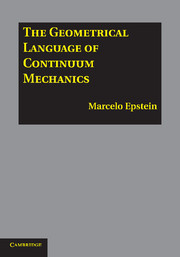9 - Connection, Curvature, Torsion
Published online by Cambridge University Press: 05 August 2011
Summary
All the fibres of a fibre bundle are, by definition, diffeomorphic to each other. In the absence of additional structure, however, there is no canonical way to single out a particular diffeomorphism between fibres. In the case of a product bundle, for example, such a special choice is indeed available because of the existence of the second projection map onto the typical fibre. In this extreme case, we may say that we are in the presence of a canonical distant parallelism in the fibre bundle. An equivalent way to describe this situation is by saying that we have a canonical family of non-intersecting smooth cross sections such that each point in the fibre bundle belongs to one, and only one, of them. In a general fibre bundle we can only afford this luxury noncanonically and locally. A connection on a fibre bundle is, roughly speaking, an additional structure defined on the bundle that permits to establish intrinsic fibre diffeomorphisms for fibres lying along curves in the base manifold. In other words, a connection can be described as a curve-dependent parallelism. Given a connection, it may so happen that the induced fibre parallelisms turn out to be curve-independent. A quantitative measure of this property or the lack thereof is provided by the vanishing, or otherwise, of the curvature of the connection.
- Type
- Chapter
- Information
- The Geometrical Language of Continuum Mechanics , pp. 245 - 273Publisher: Cambridge University PressPrint publication year: 2010



